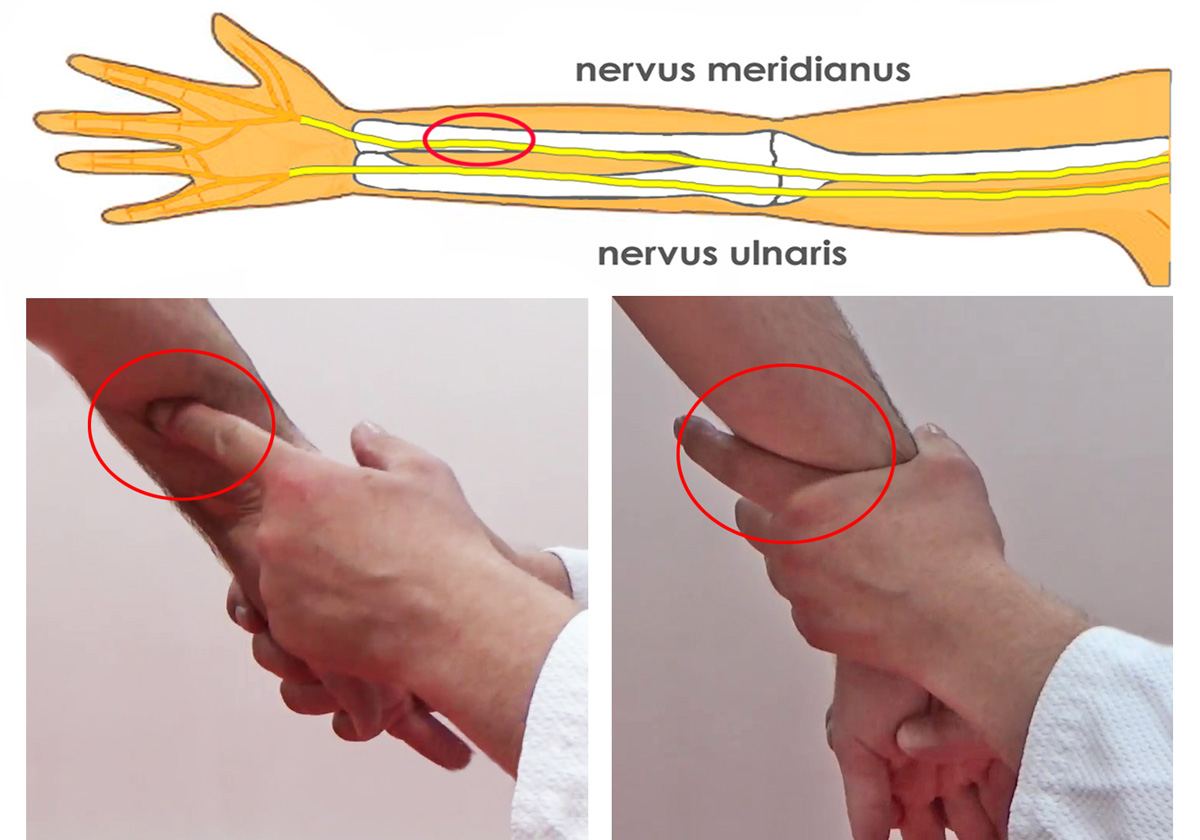
Nerve pain
Traditionally, yonkyō functioned through the pain exerted by pressure on the nervus meridianus. The upper figure shows the inside of the arm and the course of the two nerves (yellow) supplying the hand. The optimal pressure point is shown at the bottom left. The nerve runs here across the bone relatively close to the surface of the forearm. The bottom right shows the edge of the index finger pressing the nerve against the bone.
During training it can happen that Uke's nerve is so maltreated that it remains very sensitive to pain. Then Yonkyō works the whole time without much effort on the part of Nage. However, some uke develop indolence so that yonkyō no longer works through pain. Then uke must be lead by controlling the forearm.
In Ki Aikido Nage does not work with pain and controls the forearm to lead the shoulder blade.